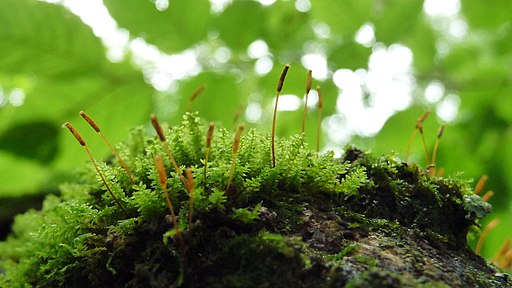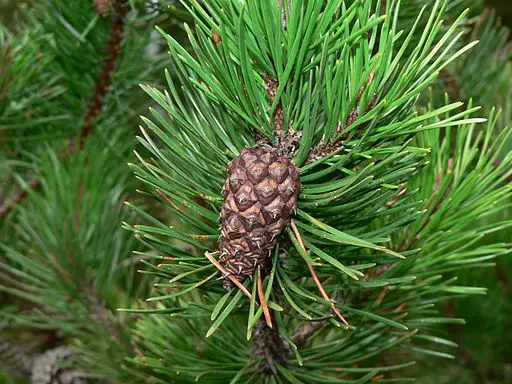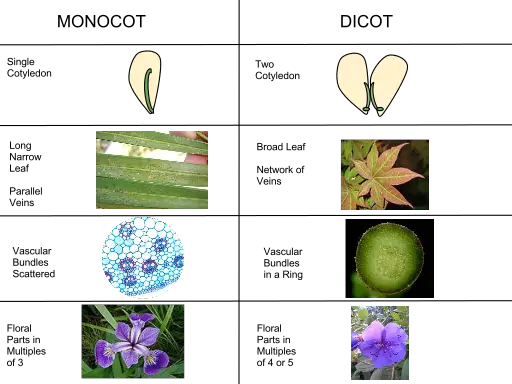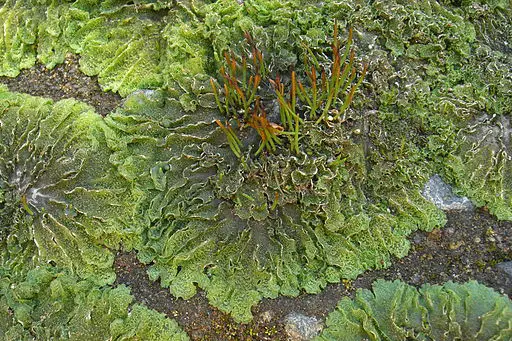Kingdom Plantae and its Different Types of Phylum
The Kingdom Plantae consists of multicellular eukaryotic organisms most of which are capable of photosynthesis (autotrophs). As such, they are characterized by a green pigment commonly known as chlorophyll (which serves to absorb light energy).
Some of the other characteristics associated with kingdom plantae include:
· Plant cells have cell walls that consist of cellulose
· Capable of sexual and asexual reproduction
· Have two main organs systems which include the shoot system (consist of leaves, buds, stems, flowers, etc.) and the root system (includes the roots, rhizomes, and tubers, etc.)
· Movement is normally achieved through growth
* While the majority of plants are capable of photosynthesis (they can manufacture their own food using water, a carbon source, and light energy).
Some, like Monotropa uniflora (Indian pipe plant) lack chlorophyll and thus obtain nutrition from other plants (as parasites) or from decaying plant matter. These plants are known as holoparasites.
* Some of the other parasitic plants are capable of some level of photosynthesis and are known as hemiparasites.
Members of the Kingdom Plantae:
* Divided into six (6) main Phyla, these include:
Phylum Bryophyta
* The name Bryophyta is derived from the Greek words "Bryon" meaning moss and "Phyton" meaning plants.
The phylum Bryophyta consists of a group of plants known as mosses. Initially, some of the other plants classified under this division included hornworts and liverworts.
Members of this group are collectively known as bryophytes and are some of the simplest (most primitive) plants. They are commonly found in moist/shaded areas (damp, humid and shaded areas) which provides favorable conditions for survival.
The Phylum Bryophyta consists of over 12,000 species with the following characteristics:
Physically, Mosses plants are characterized by the stem and leaf-like structures as well as multicellular root-like structures known as rhizoids. The leaves originate from divisions of the apical cell and have a spiral distribution.
In Peristomates (a peristome is a ring of narrow triangular segments that regulate the dispersion of spores); characteristics of the leafy shoots are used to divide the plants into two main groups. These include acrocarps and pleurocarps. Here, mosses described as acrocarps are characterized by an ascending/erect shoot system that may be branched.
Pleurocarps, on the other hand, are characterized by a creeping shoot system with significant lateral branching.
* For the most part, Mosses leaves are lanceolate or ovate in shape and undivided.
* Tiny branches develop from superficial buds.
The stem region is complex and consists of cells known as hydroids (involved in water conduction), a cortex, and the epidermal layer. Cells of the epidermal layer are elongated and have a thick pigmented wall and small Lumina. These cells are suggested to produce waxy deposits which gives the plant a glaucous characteristic.
The cortex is divided into two zones which include the sclerodermis (outer zone which provides mechanical support) and the central cylinder/inner zone which contains photosynthetic-parenchyma cells. Over time, leaves start growing from all sides of the stem. If viewed under a microscope, leaves can be seen attached to the stem along transverse lines.
The step of mosses plants is attached/anchored to substrates through structures known as rhizoids. This is a filamentous, branched tissue that promotes the transportation of water and nutrients from the soil.
Depending on the species, the rhizoids may bear smooth or roughened cross walls with papillae. In acrocarps, the rhizoid is located at the base of the stem where it is attached to a substrate. However, in some of the species, it can be found all along the stem region.
Some of the other characteristics of mosses include:
· They lack true vascular tissue. Although some studies have identified a primitive vascular tissue, transportation of water and nutrients is mostly via cell-to-cell transport. Given that this is an ineffective more of water and nutrient transport, mosses plants are commonly found in moist habitats where they can easily access these materials.
· Chloroplasts involved in photosynthesis are abundant in the leaves (leaf-like part).
· While rhizoids anchor the plant to the substrate, they are not primarily involved in the transportation of water and nutrients. However, they promote/enhance their transportation through capillary action.
They are generally small in size, ranging from 2 to 4 inches in height. This is beneficial for the absorption and transport of water and nutrients because they lack a proper vascular tissue.
They can reproduce through sexual and asexual means. Asexual reproduction (in about 15 percent of moss plants) involves the development of a new individual from fragments of the gametophytes. Once the gametophyte lands on a suitable substrate, it produces the protonemata (a chain of cells) which in turn gives rise to a new shoot.
During sexual reproduction, sex organs are usually produced at the apex of the leafy shoots. Fertilization of the gametes gives rise to a zygote which develops into a sporophyte which consists of a capsule, foot, and seta.
* The male sex organ of mosses are known as Antheridia while female sex organ is known as the Archegonium.
* Water is essential for fertilization to occur.
Some members of the Phylum Bryophyta include:
· Funaria species
· Polytrichum species
· Sphagnum species
Phylum Pteridophyta
The phylum Pteridophyta consists of about 12,000 species known as ferns. While they are simpler plants when compared to other higher plants, they are more advanced than some of the other plants like moss.
Pteridophytes can be found in moist tropical and temperate forests. However, a few species can also be found in the Arctic and Antarctic regions.
The following are some characteristics of these plants:
Morphological Characteristics
Pteridophytes are sporophytes; with a body consisting of a stem, leaves, and roots. The stem is commonly known as a rhizome in Pteridophytes. They greatly vary in size and thickness with some species (e.g. tree ferns) growing to be 20 meters in height.
These specialized stems are anchored to the ground by adventitious roots which are covered by dense hair-like structures at the growing tip. In fern allies (not true ferns e.g. Grape ferns), the stems also greatly vary in shape. For instance, whereas Grape ferns have a tuberous morphology, the stem in Horsetails appears fluted or ridged.
Quillworts, on the other hand, possess short stout stems while club-mosses have unspecialized stems. For a majority of species, the vascular system (which runs along the length of the stem) is a hollow interrupted cylinder.
It consists of xylem (involved in water transport) and the phloem (involved in the transport of nutrients). Here, water and nutrients are absorbed by roots from the ground and transported to the stem and leaves through the vascular system.
* In some of the ferns (particularly fern allies), the vascular system is not interrupted along its length.
The leaves (in true ferns) are some of the most dominant organs of Pteridophytes. They can be very complex with varying morphologies between different species.
They also continue to grow and elongate at the tips with some species (e.g. Gleicheniaceae) having leaves that are over one meter in length. In primitive fern species (and fern allies), the leaves are usually smaller in size with a needle-like or grass-like morphology.
Fern leaves may also exhibit a number of unique characteristics that include:
· Pinnate, pedate, or palmate patterns
· In true ferns, the leaves are characterized by complex venation
· Covered by hair or have a smooth surface (glabrous).
· Some species have sticky/glandular leaves
· May be thick and leathery or thin depending on the habitat in which they are found
Reproduction
Pteridophytes are capable of sexual and asexual reproduction.
Asexual Reproduction
There are three forms of asexual reproduction that include:
Apogamy - In this type of reproduction, a series of cell divisions within the sporangia results in the production of spores with the same genetic composition as the sporophyte. These spores (diplospores) give rise to the gametophyte with the potential to produce new sporophytes. This type of reproduction is common during dry conditions
Reproduction at the proliferous frond tips - This type of asexual reproduction is similar to fragmentation. As the fern grows, the increasing weight may cause the frond to bend and eventually become rooted to the ground. In the right conditions, the rooted part develops into a new individual and eventually separates from the parent plant. Here, the new individual is genetically similar to the parent plant and the process may repeat
Asexual reproduction from rhizomes - In some of the species, the rhizome spreads through the soil and gives rise to new individuals. As these modified stems spread above or just below the soil, new roots and formed. At the same time, new shoots grow upwards giving rise to new individuals that may be clumped together.
Sexual Reproduction
Sexual reproduction in ferns involves the fusion of male and female gametes. Here, male gametes are produced from the antheridia while female gametes are contained in the archegonia. The fusion of these gametes results in the formation of zygotes which in turn develops to produce the sporophyte.
Some members of the Phylum Pteridophyta in Kingdom Plantae include:
· Psilotum species
· Lycopodium species
· Pteris species
· Equisetum species
· Adiantum species
Phylum Coniferophyta (Gymnosperms)
* The name Gymnosperms is derived from the Greek words "Gymnos" meaning naked and "Sperma" which means seeds.
* As the name suggests, the seeds of these plants are not covered (naked). This also goes for the ovules.
Members of the Phylum Coniferophyta (Gymnosperms) in Kingdom Plantae are said to have been the first vascular plants to produce seeds. The majority of the species are woody plants (a few species are shrubs) commonly found in the northern hemisphere (especially in cool temperate and boreal areas such as the Taiga forest).
The following are some of the characteristics associated with conifers:
Morphology
Conifers are woody plants with species like Sequoia (redwood tree) being some of the tallest trees on the planet. As such, they are characterized by features commonly found in most higher plants including a stem, leaves, branches, and roots.
The leaves of these plants are commonly known as needles or scales. Although they are generally small in size, they vary in shape from one species to another.
Yew has linear leaves which may be short or long with pointed tips. The Norway spruce, on the other hand, has acicular leaves which appear flattened with blunt tips while the Giant redwood has scale-like leaves which are typically short, flattened, and tightly packed on the branches.
With the exception of a few species (E.g. Larch), most conifers are evergreen and therefore remain green all year long. This is achieved by gradually shedding leaves throughout the year while growing new ones. As well, Larch trees, and a few other conifer species, shed their leaves (which turn yellow in autumn) and therefore remain leafless during winter.
* In some of the species (E.g. Pine trees), the leaves are covered by a waxy material which allows them to retain water during winter.
The stem is anchored to the ground through tap roots which allow the plant to absorb water and nutrients. These are transported to other parts of the plant through the vascular tissue. Depending on the species, these roots may be associated with fungus or bacteria.
Whereas Cycas contain nitrogen-fixing bacteria in their coralloid roots, the fungus mycorrhiza can be found on the roots of the Pinus tree.
Reproduction
The majority of conifers are monoecious which means that the male and female cones can be found on the same plant. The female organ is commonly known as inflorescences. It consists of soft, overlapping brightly colored scales that form the strobilus (immature corn).
While the ovules are contained in this cone, it's worth noting that they are not contained in an ovary. The male cone is normally smaller in size and carries the pollen (powderly in nature). The pollen from the male cone is usually transported by wind.
Following fertilization, the female cone develops into a mature cone with seeds. The seeds are dispersed when the cone opens and give rise to new individuals.
* Gymnosperms do not produce flowers and fruits.
Some examples of species within the Phylum Coniferophyta include:
· Araucaria columnaris (Cook pine)
· Abies grandis (Grand fir)
· Abies lasiocarpa (Subalpine fir)
· Larix kaempferi (Japanese Larch)
· Taxus baccata (The European Yew)
Phylum Magnoliophyta/Anthophyta (Angiosperms - Flowering plants)
Members of the Phylum in Kingdom Plantae are the most common plants, making up over 80 percent of all plants on Earth. They can be found in just about every habitat from deserts to the Antarctic.
Compared to the group, Angiosperms are the most evolved plants and display high diversity. As the name suggests, members of the group produce flowers (which contain pollen grains and ovules). They also produce fruits that contain the seeds.
* Magnoliophyta consists of over 300,000 species.
Angiosperms are divided into two main groups based on the characteristics of the cotyledon.
These include:
Monocotyledons/Monocots - Monocots are a type of angiosperms with a single cotyledon (embryonic leaf) in the seeding.
Some of the other characteristics associated with monocots include:
· Usually have adventitious roots
· In most species, the stem (which may have nodes) is unbranched
· The veins normally run parallel to the length of the leaves. They also have smooth margins
· Vascular tissue is normally scattered
Some of the plants classified as monocots include:
· Rice
· Corn
· Sugar cane
· Cereals
Dicotyledons/Dicots
As the name suggests, dicots have two cotyledons/embryonic leaves.
Main characteristics of dicots include:
· Leaves have a network of veins
· Vascular tissue is arranged in such a manner that it forms a ring within the stem
· Most species have a tap root
Some examples of dicot plants include:
· Roses
· Daisies
· Peas
· Cacti
Basal Angiosperms
While Angiosperms are widely divided into two main groups (Monocots and Dicots) in Kingdom Plantae, another group consists of members known as Basal Angiosperms. These plants share characteristics associated with both the Monocot and Dicot plants.
Some of the plants that belong to this group include; cinnamon, avocado tree, lotu, and spice.
General Morphology
All plants within this phylum consist of a stem, leaves, and leaves. However, these features vary in size, shape, and arrangement between different species. The most defining characteristic of all angiosperms is that they are flowering plants.
The flowers are characterized by a number of important features including the stamen, carpel, petals, and sepal. Like the leaves, however, flowers also exhibit significant variation in appearance between different types of plants.
* Unlike Gymnosperms, pollen and ovules are contained in the flowers while seeds can be found inside the fruits.
Reproduction
The sex organs in Angiosperms are located in the flowers. The male sex organ is known as the stamen and consists of a filament and anther (pollen grains are located at the anthers). The female organ is known as the pistil (or carpel). Here, the ovules are contained within the ovary in the pistil.
Following pollination (dispersal of pollen from the anthers), the pollens (a single pollen consists of a pollen tube cell and a generative cell) land on the stigma where they germinate and grow pollen tubes down the style to the ovule in the embryo-sac.
Here, the male gametes fuse with the female egg cell resulting in the formation of a zygote. In turn, the zygote gives rise to an embryo as the ovules develop into seeds.
* During fertilization, some of the male gametes fuse with the diploid secondary nucleus resulting in the production of triploid primary endosperm nucleus (PEN). The primary endosperm nucleus develops, giving rise to the endosperm which serves to nourish the embryo as it develops.
* As the ovules develop to seeds, the ovary becomes a fruit in which the seeds are contained.
Phylum Marchantiophyta
Members of the phylum Marchantiophyta are commonly known as liverworts (initially classified together with Moss plants). They are commonly found in moist habitats and are distributed throughout the world. Like Mosses plants, they largely rely on diffusion to transport water and nutrients. For this reason, they are commonly found in moist areas, particularly in the tropics.
* There are over 10,000 species of liverworts throughout the world.
Characteristics
Generally, liverworts are small, green plants; ranging between 2 and 22 mm in width. Though they appear leafy, the majority of liverworts do not have true leaves or stems. Rather, they are thalloid and are therefore characterized by a thallus (leaf-like vegetative tissue) and root-like filamentous known as rhizoids.
The thallus part of the plant contains photosynthetic tissue (where chlorophyll pigments are located) while the rhizoid attaches the plant to the substrate.
Reproduction
Like mosses plants, liverworts are capable of sexual and asexual reproduction:
Asexual reproduction - Asexual reproduction occurs when the gemmae (modified bud of tissue) falls on the ground and germinates to give rise to a new individual. This is common in thallose liverworts.
In these plants, the gemmae are contained in goblet-like structures on the thallus. In the event of strong wind or rain etc., the bud tissue is knocked out of the cup and falls to the ground where it germinates under favorable conditions.
Sexual reproduction - Liverwort gametes are contained miniature umbrella-like structures that grow from the thallus. During sexual reproduction, male gametes are released from the male structure and swim along the surface of the plant in order to fertilize the female eggs (this requires moist conditions).
Following fertilization, the embryo develops into a capsule with spores. The spores give rise to new individuals when they land on a suitable surface following dispersal.
Phylum Anthocerotophyta (Hornworts)
Initially classified together with Mosses plants in the Phylum Bryophyta, Hornworts were eventually placed in the phylum Anthocerotophyta based on new genetic evidence. Like Mosses and Liverworts, Hornworts are simple plants commonly found in terrestrial habitats (moist soil and rocks) throughout the world.
Characteristics
Like the other simple plants, Hornworts are generally small (less than 5 cm) plants that grow together in clusters. The gametophyte forms are characterized by a flattened and irregularly-shaped thallus as well as rhizoids for attachment.
Compared to sporophytes, gametophytes are generally smaller in size, ranging between 0.8 to 1.6 inches in diameter (sporophytes can grow to over 2 inches in diameter).
Reproduction
Asexual reproduction - Asexual reproduction in hornworts occurs through fragmentation. Here, the fragmentation of leaves during dry conditions results in the release of gemmae which give rise to new individuals under favorable conditions.
Sexual reproduction - During sexual reproduction, male gametes are released from the antheridium (male sex organ) and travel to the female sex organ (to fertilize the female gametes) under moist conditions.
Following fertilization, the female sex organ develops to produce a sporangium (an elongate structure) that splits to release spores. Once they are dispersed, the spores give rise to a new individual.
Phylum Chlorophyta (Green algae)
Members of the Phylum Chlorophyta are not true plants. However, they are the organisms from which plants evolved. For this reason, they are often mentioned when talking about plants.
Generally, members of the group include single-celled flagellates, macroscopic seaweeds, and other multicellular algae. They can be found in various habitats throughout the world (marine and freshwater habitats, rocks, soil, and trees, etc.) where they exist as free-living organisms.
Some of the species form a symbiotic relationship with fungi or other animals.
Reproduction
Methods of reproduction include:
Fragmentation - In this type of reproduction, fragments from the parent develop into a new individual.
Spores - This is a type of asexual reproduction where spores (e.g. zoospores) germinate to give rise to a new individual - These spores are motile (by means of a flagellum)
Sexual reproduction - This type of reproduction involves the fusion of male and female games - These gametes vary in size and shape (some can move by means of a flagellum)
* Green algae have chlorophyll and are therefore capable of photosynthesis.
Some members of the Phylum Chlorophyta include:
· Ulothrix species
· Chlamydomonas species
· Volvox species
· Fucus species
What is the difference between a plant cell and an animal cell?
What does Phylum mean in Biology?
Return to learning about Photosynthesis
Return to Multicellular Organisms
Return from Kingdom Plantae to MicroscopeMaster home
References
Eftychios Frangedakis et al., (2020). The hornworts: morphology, evolution and development.
George Yatskievych. (2003). Pteridophytes (Ferns).
Glime, J. M. (2017). Anthocerotophyta.
J J Kaur and D K Rao. (2016). Living Science Biology 9.
Xiao-Hong An. (2016). Morphological characteristics of phytoliths from representativeconifers in China.
Links
https://www.sciencedirect.com/topics/medicine-and-dentistry/kingdom-plantae
https://www.kloranebotanical.foundation/en/main-characteristics-conifers
Find out how to advertise on MicroscopeMaster!








